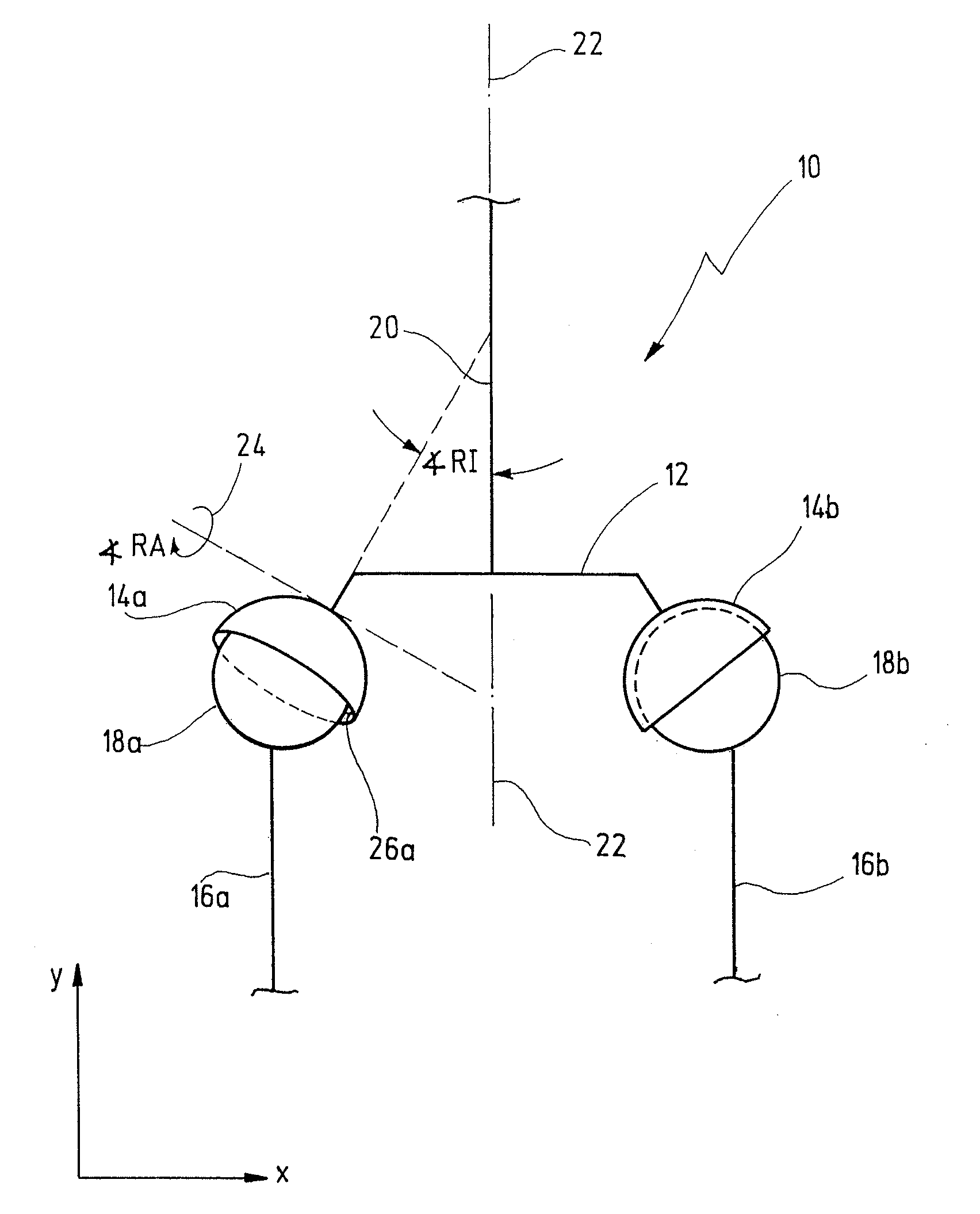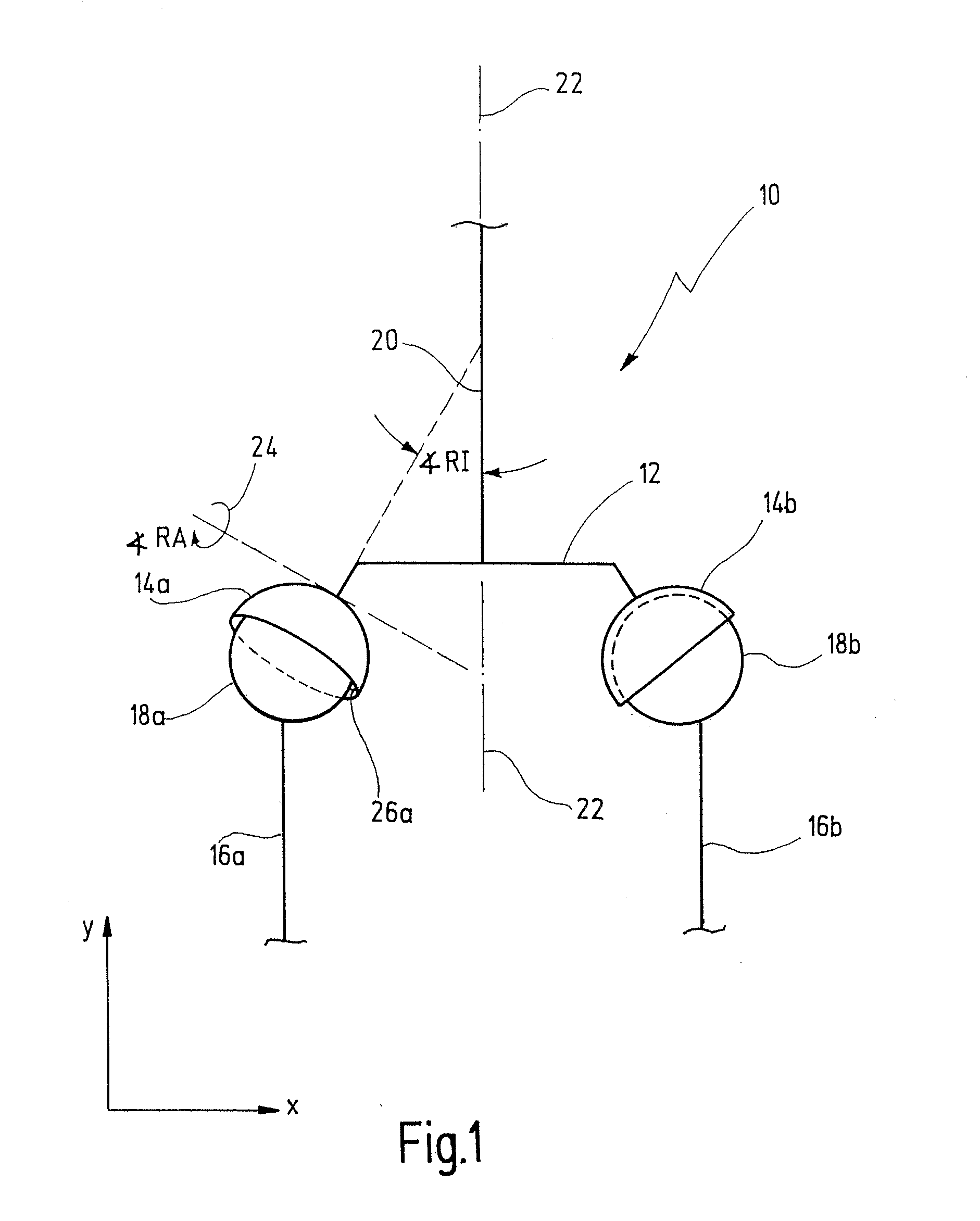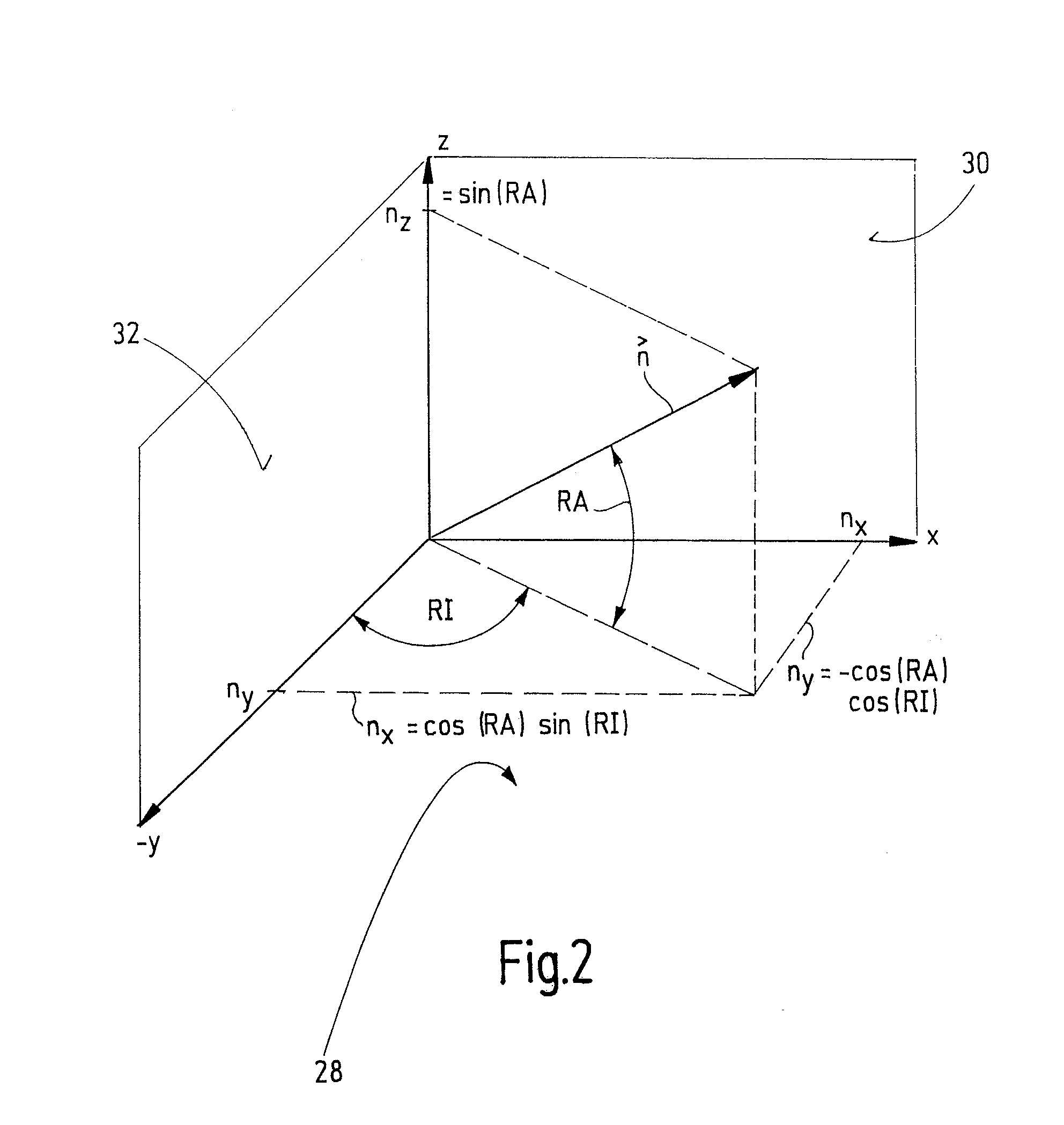Method of determining body orientations in space on the basis of two X-ray records
- Summary
- Abstract
- Description
- Claims
- Application Information
AI Technical Summary
Benefits of technology
Problems solved by technology
Method used
Image
Examples
Embodiment Construction
[0052] Mathematically, the orientation of an acetabulum can be represented by a normal vector {right arrow over (n)} of the acetabulum opening plane with respect to an anatomical pelvis coordinate system (see FIG. 1). The anatomical pelvis coordinate system is preferably defined with the aid of a anterior-pelvic plane, which is in turn defined by two spinae of the pelvis (“spines iliac anterior superior, SIAS”) and the symphysis of the pelvic bone. This plane is defined by the x and y unit vectors of a Cartesian coordinate system. The z unit vector of this system is perpendicular to this plane, and emerges from it. The inclination and anteversion of the acetabulum can thus be expressed in polar coordinates, in the form of the azimuth and the polar angle.
[0053]FIG. 2 shows an example of the orientation of any given vector {right arrow over (n)} in a polar coordinate system.
[0054] The normal vector {right arrow over (n)} is perpendicular to the acetabular opening surface 26 (see FIG...
PUM
 Login to View More
Login to View More Abstract
Description
Claims
Application Information
 Login to View More
Login to View More - R&D
- Intellectual Property
- Life Sciences
- Materials
- Tech Scout
- Unparalleled Data Quality
- Higher Quality Content
- 60% Fewer Hallucinations
Browse by: Latest US Patents, China's latest patents, Technical Efficacy Thesaurus, Application Domain, Technology Topic, Popular Technical Reports.
© 2025 PatSnap. All rights reserved.Legal|Privacy policy|Modern Slavery Act Transparency Statement|Sitemap|About US| Contact US: help@patsnap.com



